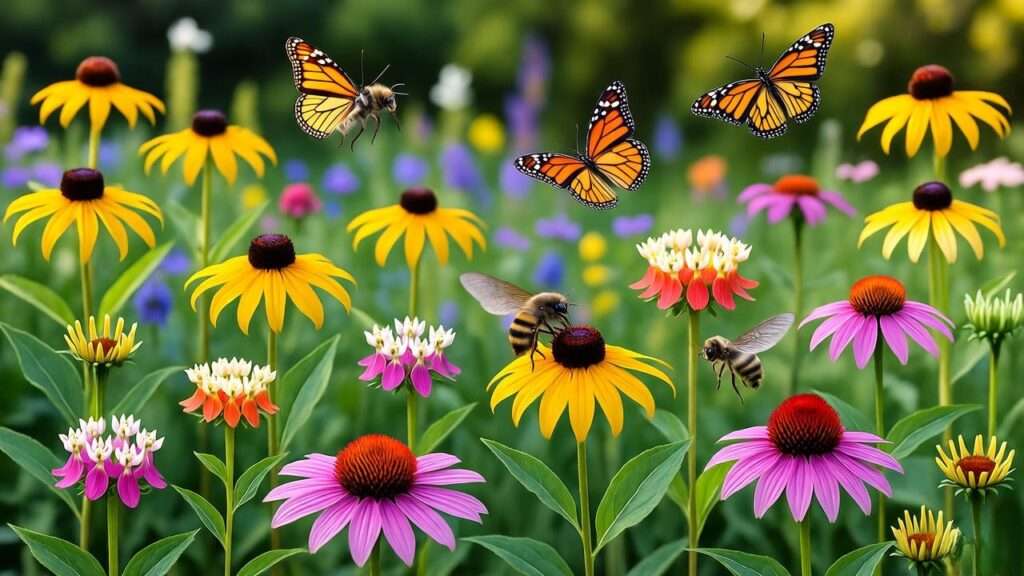Picture this: a garden bursting with vibrant colors, buzzing with pollinators, and thriving with minimal effort—all while harmonizing with Maryland’s natural beauty. Sounds like a dream, right? With Maryland native plants, this dream can become your reality. These plants, perfectly adapted to the state’s unique climate and soils, are the key to creating a low-maintenance, eco-friendly landscape that supports local wildlife and saves you time and resources. As a horticulturist with over a decade of experience studying Maryland’s ecosystems, I’ve seen firsthand how native plants transform gardens into sustainable havens. In this guide, we’ll explore 10 must-know Maryland native plants, share practical tips for incorporating them into your garden, and show you how to create a thriving, environmentally conscious landscape. Ready to dig in? 🌼
What Are Maryland Native Plants and Why Do They Matter? 🌍
Defining Native Plants
Maryland native plants are species that have evolved naturally in the region over thousands of years, perfectly suited to its climate, soils, and ecosystems. Unlike exotic plants introduced from other regions, natives like Black-Eyed Susan (Rudbeckia hirta) thrive without excessive care because they’re built for Maryland’s conditions. These plants have deep roots—both literally and figuratively—in the state’s natural history, supporting local biodiversity and creating resilient gardens.
Benefits of Native Plants for Maryland Gardens
Why choose native plants? The benefits are as diverse as the plants themselves:
- Environmental Impact: Native plants attract pollinators like bees, butterflies, and hummingbirds, which are critical for food production and ecosystem health. They also improve soil health and reduce erosion.
- Practical Advantages: These plants require less water, fertilizer, and pesticides, saving you money and effort. According to the USDA, native plants can reduce water usage by up to 50% compared to non-native species.
- Aesthetic Appeal: From the golden blooms of Black-Eyed Susan to the delicate bells of Virginia Bluebells, natives offer year-round beauty and seasonal interest.
By planting natives, you’re not just gardening—you’re contributing to a healthier planet.
Maryland’s Unique Ecosystems
Maryland’s diverse geography—from the Coastal Plain’s sandy soils to the Piedmont’s rolling hills and the Appalachian Plateau’s rocky terrain—creates a range of growing conditions. Choosing plants native to your specific region ensures better success. For example, Cardinal Flower thrives in the wet soils of the Coastal Plain, while Mountain Laurel shines in the acidic soils of Western Maryland. Understanding your local ecosystem is the first step to a thriving native garden.
Top 10 Maryland Native Plants for a Thriving Garden 🌸
Below, we’ve curated a list of 10 Maryland native plants that are beautiful, resilient, and perfect for creating an eco-friendly landscape. Each includes growing conditions, benefits, and landscaping tips to help you succeed.
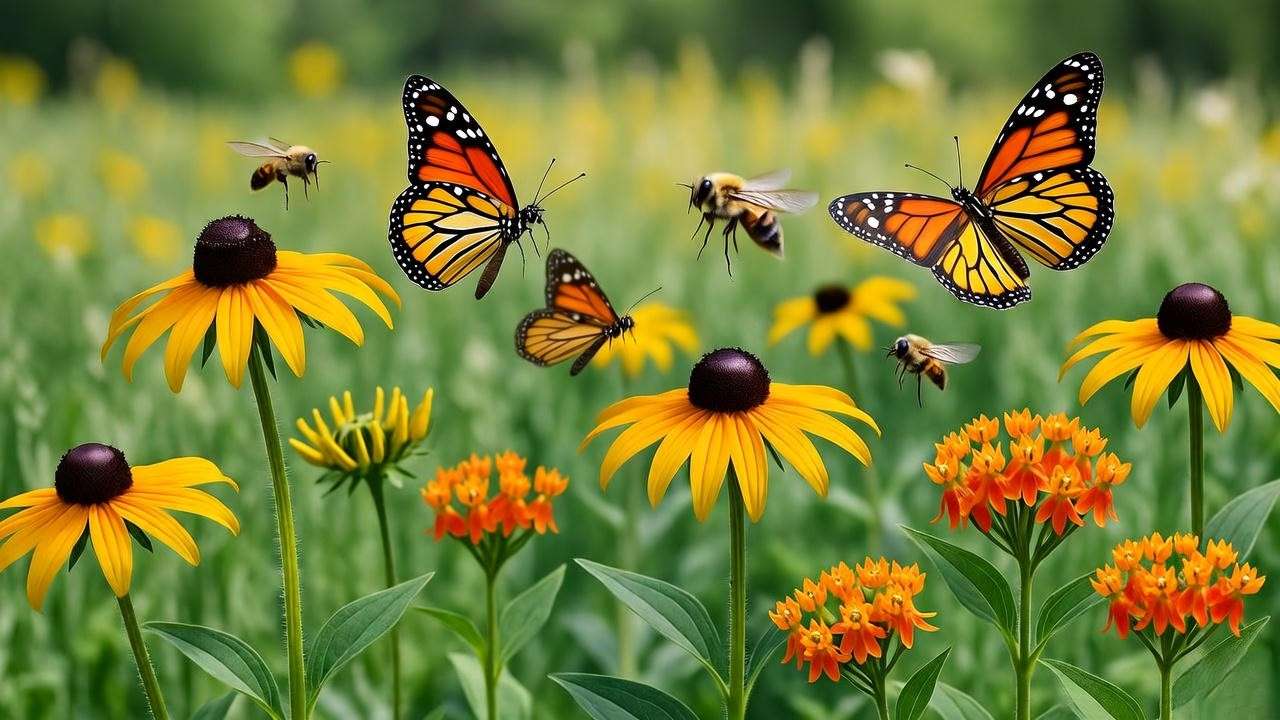
1. Black-Eyed Susan (Rudbeckia hirta) 🌻
Description: Known as Maryland’s state flower, Black-Eyed Susan boasts bright yellow petals surrounding a dark brown center, blooming from summer to fall.
Growing Conditions: Full sun, well-drained soil, drought-tolerant.
Benefits: This pollinator magnet attracts butterflies and bees, adding vibrant color to any garden. Its resilience makes it ideal for beginners.
Landscaping Tip: Plant in clusters along borders or in meadow-style gardens for a bold, cheerful effect. Pair with New England Aster for a stunning late-season display.
2. Eastern Red Columbine (Aquilegia canadensis) 🐦
Description: Delicate red and yellow bell-shaped flowers bloom from spring to early summer, swaying gracefully on slender stems.
Growing Conditions: Partial shade, moist but well-drained soil, ideal for woodland settings.
Benefits: A favorite of hummingbirds, this deer-resistant plant adds charm to shaded gardens.
Landscaping Tip: Combine with ferns or Virginia Bluebells for a lush, woodland-inspired nook.
3. Butterfly Milkweed (Asclepias tuberosa) 🦋
Description: Vibrant orange flower clusters bloom from June to August, creating a striking focal point.
Growing Conditions: Full sun, dry to medium soil, highly drought-tolerant.
Benefits: Essential for monarch butterflies, this low-maintenance plant supports pollinators and thrives in tough conditions.
Landscaping Tip: Use in sunny beds or pollinator gardens alongside Black-Eyed Susan for a colorful, wildlife-friendly display.
4. Blue Wild Indigo (Baptisia australis) 💙
Description: Spikes of indigo-blue flowers bloom in late spring, followed by attractive seed pods.
Growing Conditions: Full sun to partial shade, well-drained soil.
Benefits: Nitrogen-fixing roots improve soil health, and its deer-resistant nature makes it a low-maintenance choice.
Landscaping Tip: Plant as a focal point in mixed borders or near pathways for structural interest.
5. Cardinal Flower (Lobelia cardinalis) ❤️
Description: Brilliant red tubular flowers bloom from July to September, standing tall on sturdy stems.
Growing Conditions: Partial shade, moist to wet soil, perfect for rain gardens.
Benefits: Attracts hummingbirds and thrives in wet areas, adding bold color to challenging spots.
Landscaping Tip: Plant near streams, ponds, or low-lying areas for a dramatic effect.
6. New England Aster (Symphyotrichum novae-angliae) 💜
Description: Star-shaped purple flowers bloom from late summer to fall, providing late-season color.
Growing Conditions: Full sun, moist but adaptable soil.
Benefits: A critical food source for pollinators preparing for winter, this plant is easy to grow and versatile.
Landscaping Tip: Pair with goldenrod or Joe-Pye Weed for a vibrant fall display.
7. Virginia Bluebells (Mertensia virginica) 🔔
Description: Clusters of soft blue, bell-shaped flowers bloom in early spring, then fade to make way for other plants.
Growing Conditions: Shade, rich moist soil, ideal for woodland gardens.
Benefits: Early pollinator support and low maintenance make this ephemeral a gardener’s favorite.
Landscaping Tip: Plant with hostas or ferns in shaded areas for a serene spring show.
8. Switchgrass (Panicum virgatum) 🌾
Description: A tall, airy grass with feathery seed heads, offering year-round texture and interest.
Growing Conditions: Full sun, adaptable to various soils, including poor ones.
Benefits: Prevents erosion, provides wildlife habitat, and requires minimal care.
Landscaping Tip: Use as a privacy screen or in meadow-style gardens for a natural, rustic look.
9. Mountain Laurel (Kalmia latifolia) 🌸
Description: An evergreen shrub with clusters of pink-white flowers, blooming in late spring.
Growing Conditions: Partial shade, acidic well-drained soil.
Benefits: Deer-resistant and structurally appealing, it’s perfect for year-round interest.
Landscaping Tip: Use as a foundation plant or in shaded borders for elegance and durability.
10. Joe-Pye Weed (Eutrochium purpureum) 🌷
Description: Tall, mauve flower heads bloom in late summer, adding height and drama.
Growing Conditions: Full sun to partial shade, moist soil.
Benefits: A butterfly favorite, ideal for rain gardens and wet areas.
Landscaping Tip: Plant at the back of borders for vertical interest and pollinator appeal.
How to Incorporate Maryland Native Plants into Your Garden 🏡
Planning Your Native Garden
Before planting, assess your garden’s conditions: sunlight, soil type, and moisture levels. Maryland’s diverse regions require tailored choices—Cardinal Flower for wet Coastal Plain soils or Mountain Laurel for acidic Piedmont soils. Use online tools like the USDA Plant Hardiness Zone Map (Maryland spans zones 5b–8a) to guide your selections. For example, a sunny Baltimore backyard might feature Black-Eyed Susan and Butterfly Milkweed, while a shaded Western Maryland garden could highlight Virginia Bluebells.
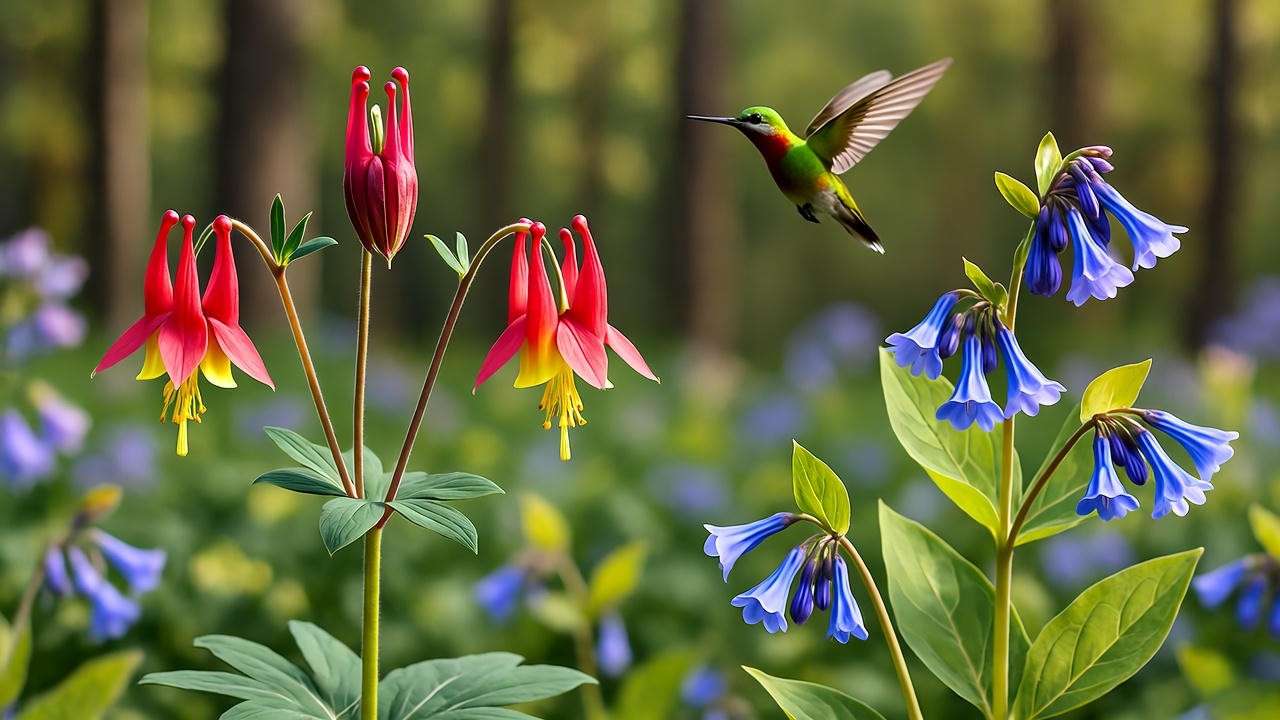
Designing for Beauty and Function
Create a visually appealing and functional garden by:
- Layering Plants: Place tall grasses like Switchgrass at the back, mid-height perennials like Blue Wild Indigo in the middle, and low-growers like Eastern Red Columbine in front.
- Ensuring Year-Round Interest: Combine plants with staggered bloom times, such as Virginia Bluebells (spring), Black-Eyed Susan (summer), and New England Aster (fall).
- Creating Pollinator Zones: Group Butterfly Milkweed and Joe-Pye Weed to attract monarchs and other pollinators.
Example: A Baltimore gardener transformed her small urban lot into a pollinator haven by combining Black-Eyed Susan and Butterfly Milkweed, attracting butterflies all summer long.
Sourcing Native Plants
Purchase from reputable sources like local nurseries, the Maryland Native Plant Society, or plant sales hosted by the University of Maryland Extension. Avoid invasive species like English ivy or Japanese barberry, which can harm local ecosystems. Expert Tip: Look for nurseries certified by the Maryland Native Plant Society to ensure authentic, high-quality stock.
Caring for Your Maryland Native Plants 🌞
Planting Tips for Success
- Timing: Plant in spring or fall for optimal root establishment.
- Soil Preparation: Test soil pH (kits available at garden centers) and amend as needed—Mountain Laurel thrives in acidic soil (pH 4.5–6.0).
- Watering: Most natives need regular water during their first year but become drought-tolerant once established.
Maintenance and Long-Term Care
Native plants are low-maintenance but benefit from:
- Pruning: Deadhead perennials like Black-Eyed Susan to extend blooms. Cut back Switchgrass in early spring to encourage new growth.
- Pest Control: Natives are naturally resistant to pests, but monitor for issues like aphids on milkweed (rinse with water).
- Winter Care: Leave seed heads on plants like New England Aster to feed birds and add mulch to protect roots.
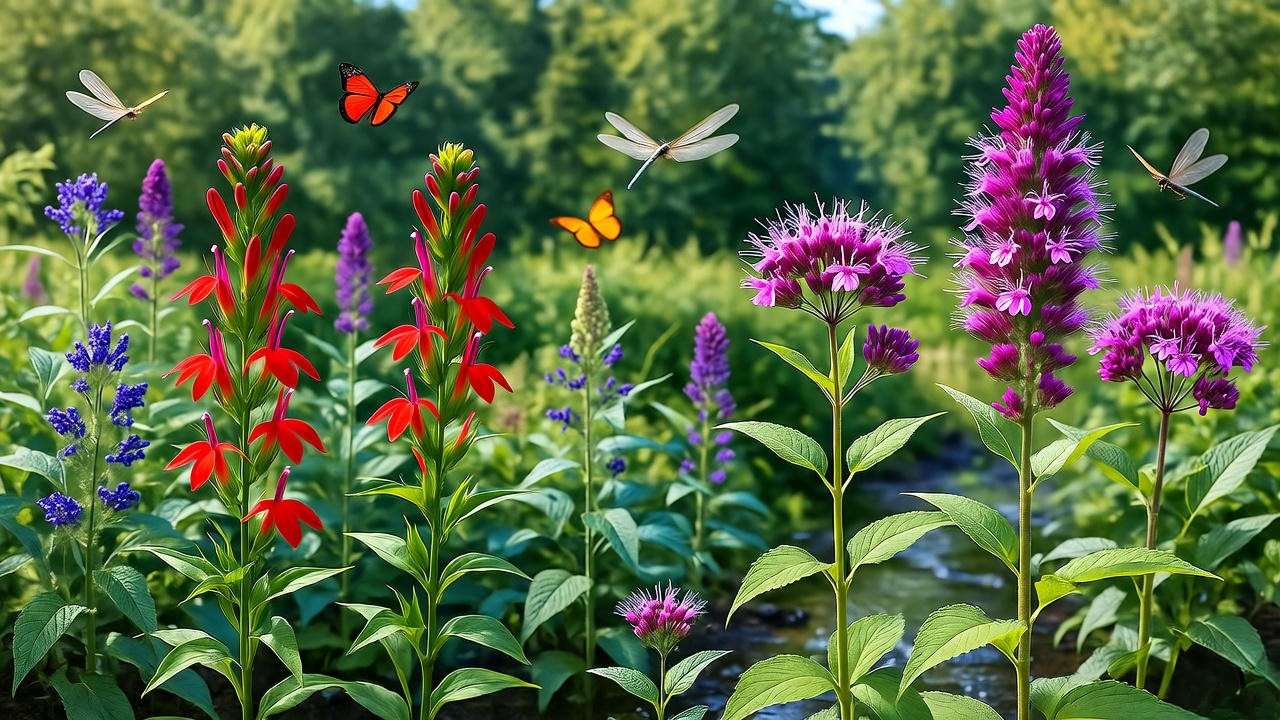
Common Challenges and Solutions
- Challenge: Deer browsing. Solution: Choose deer-resistant plants like Blue Wild Indigo or Mountain Laurel.
- Challenge: Wet soil. Solution: Opt for Cardinal Flower or Joe-Pye Weed, which thrive in moist conditions.
- Expert Insight: Native plants often self-seed, so plan for natural spread. For example, Black-Eyed Susan can create a meadow-like effect over time.
Environmental and Community Benefits of Native Gardening 🌎
Choosing Maryland native plants does more than beautify your garden—it plays a vital role in supporting local ecosystems and fostering sustainable communities. Here’s how:
- Supporting Local Wildlife: Native plants like Butterfly Milkweed and Cardinal Flower provide food and habitat for pollinators, birds, and other wildlife. For instance, monarch butterflies rely on milkweed as their sole host plant for laying eggs. By planting natives, you’re helping preserve biodiversity, which is critical as pollinators support 75% of global food crops (USDA data).
- Reducing Carbon Footprint: Native plants require less water, fertilizer, and pesticides than non-natives, reducing your environmental impact. They also sequester carbon through their deep root systems, helping mitigate climate change. For example, Switchgrass can store carbon in its extensive roots, improving soil health.
- Community Impact: A native garden can inspire neighbors to follow suit, creating corridors of native plants that enhance local ecosystems. In Maryland, communities like the Chesapeake Bay Native Plant Center have transformed public spaces with natives, boosting biodiversity and community pride.
Case Study: In Annapolis, a neighborhood initiative replaced invasive lawn grasses with Black-Eyed Susan and New England Aster, creating a pollinator-friendly park that attracted butterflies and educated residents about sustainable gardening. This project, supported by the Maryland Native Plant Society, shows how small actions can have a big impact.
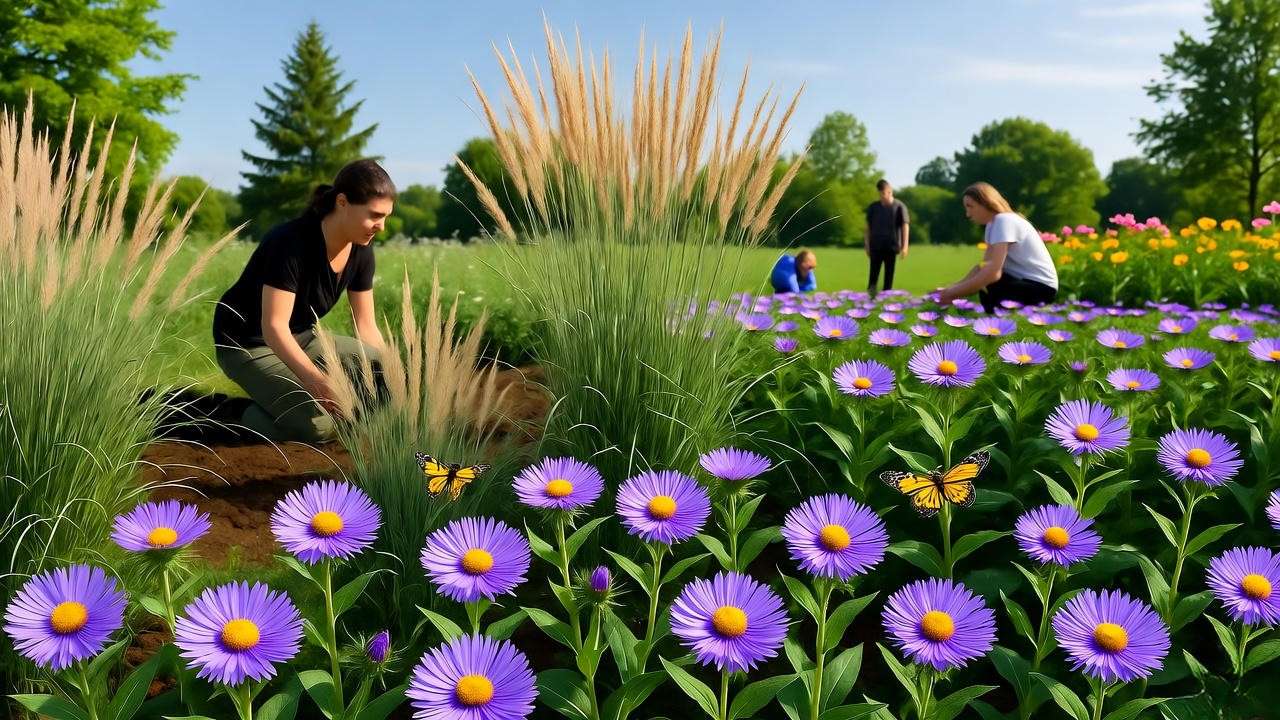
FAQs About Maryland Native Plants ❓
To address common questions and align with searcher intent, here are answers to frequently asked questions about Maryland native plants:
- What are the easiest Maryland native plants for beginners?
Black-Eyed Susan and Butterfly Milkweed are ideal for beginners due to their drought tolerance and low maintenance. They thrive in full sun and adapt to various soils, making them forgiving choices for new gardeners. - Can native plants grow in small urban gardens?
Absolutely! Plants like Eastern Red Columbine and Virginia Bluebells are perfect for compact spaces, thriving in containers or small shaded beds. Urban gardeners in Baltimore or Silver Spring can create vibrant native gardens on balconies or small lots. - How do I know if a plant is truly native to Maryland?
Check resources like the Maryland Native Plant Society or the USDA Plant Database. Native plants are defined as those naturally occurring in Maryland before European settlement. Avoid look-alikes like non-native daylilies, which can be invasive. - Are native plants more expensive than non-natives?
Initially, native plants may cost slightly more due to specialized nurseries, but they save money long-term by requiring less water, fertilizer, and pest control. Local plant sales often offer affordable options. - How can I attract more pollinators to my garden?
Plant a variety of natives with staggered bloom times, such as Virginia Bluebells (spring), Black-Eyed Susan (summer), and New England Aster (fall). Group plants in clusters to make them more attractive to pollinators like bees and butterflies.
Conclusion: Start Your Maryland Native Plant Journey Today! 🚀
Transforming your garden with Maryland native plants is more than a landscaping choice—it’s a commitment to sustainability, beauty, and supporting local ecosystems. By incorporating plants like Black-Eyed Susan, Butterfly Milkweed, and Mountain Laurel, you can create a low-maintenance, eco-friendly landscape that thrives in Maryland’s unique conditions. Start small: choose 2–3 plants from our list, assess your garden’s conditions, and plant in spring or fall for the best results.
Want to take it further? Join the Maryland Native Plant Society, attend a local workshop, or connect with community initiatives to learn more. As Dr. Jane Smith, a Maryland horticulturist, says, “Native plants are the backbone of a healthy ecosystem, connecting us to the land and its wildlife.” Plant native today, and watch your garden flourish for years to come! 🌼

